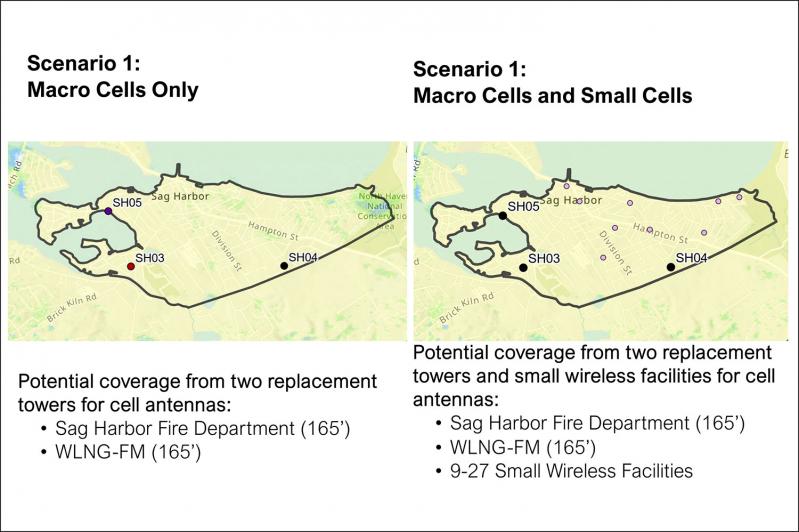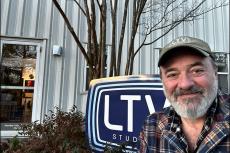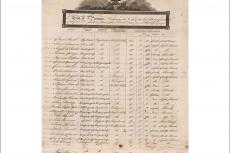A follow-up presentation on the development of a wireless master plan was delivered to the Sag Harbor Village Board when it met on Tuesday, with plans for a community survey to be conducted in the coming weeks.
CityScape Consultants is developing the plan, and as she had in August the consultancy’s Susan Rabold appeared virtually to update and confer with the board.
At the August meeting, Ms. Rabold told the board that the consultancy looks at a municipality’s existing tower facilities to determine whether they can be retrofitted or replaced to accommodate more wireless infrastructure. Existing towers within the jurisdictional boundary are the 165-foot-tall radio tower on WLNG’s Redwood Road property and the 120-foot tower at the firehouse on Brick Kiln Road. Neither at present hosts commercial wireless service providers. WLNG plans to replace its tower, and an application is now before the Building Department.
There are also three existing base stations, antennae mounted on a structure that is not a tower. One is at the Municipal Building, another in the steeple at Christ Episcopal Church, and one on a water tower near the former Harbor Heights service station. All four wireless carriers — AT&T, T-Mobile, Verizon, and Dish Wireless, operating as Boost Wireless — use the latter base station, but its elevation is low, Ms. Rabold told the board in August, so its signal does not cover the entire village. Only one carrier is represented on the other two base stations. “It’s highly unlikely that any other providers will go there,” she said on Tuesday.
Ms. Rabold was asked at her August presentation if a taller tower at the firehouse would provide greater coverage. CityScape engineers, she said, determined that raising its elevation and adding a co-location for all service providers, in combination with WLNG’s tower, would result in “pretty thorough” coverage while leaving scattered gaps.
With a taller tower at the firehouse, the addition of approximately nine “small wireless facilities,” or micro towers, which are used to add capacity to a network and are usually no more than 50 feet tall, would fill in remaining coverage gaps. “Ideally, you would want those built for all the providers to share,” Ms. Rabold said, “but we haven’t really seen a lot of that happening in the field yet. So we say your minimum number would be nine, and if all the wireless providers wanted to supplement those smaller coverage gaps, you may end up with as many as 27.”
One challenge, she said, “is getting the other service providers to want to share a facility in lieu of them having their own pole that gives them more flexibility to go where they want and do maintenance on it when they want.”
She described a second scenario, in which the WLNG tower did not host wireless equipment. Between 11 and 33 small wireless facilities would be needed to cover the village’s geographic area, she said.
Based on the board’s feedback following her previous presentation, Ms. Rabold said she would revise a community survey, which in August she had said would be a next step in the development of the wireless master plan. The survey should be conducted over two to three weeks, and if it happens soon she could report back before the holidays.
“I would like to get this started as soon as possible,” Mayor Thomas Gardella said, adding that feedback in his neighborhood was “very much against” a micro tower in that area.
The board, Ms. Rabold said, should keep in mind that “the industry has lobbied the federal government enough now to where they’re allowed to go in your street right of way, pretty much by right.” The survey, in revised form, will poll residents on various wireless infrastructure, including the WLNG and firehouse towers. “We would recommend revising your code that directed the industry to follow the hierarchy that the community prefers so that when they come in, if they were proposing a type of installation that the community does not want to see, you would have some leverage in redirecting them to putting in what you do want them to put in.”




